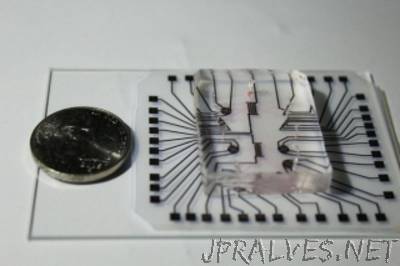
“Researchers at the Stanford University School of Medicine have developed a way to produce a cheap and reusable diagnostic “lab on a chip” with the help of an ordinary inkjet printer. At a production cost of as little as 1 cent per chip, the new technology could usher in a medical diagnostics revolution like the kind brought on by low-cost genome sequencing, said Ron Davis, PhD, professor of biochemistry and of genetics and director of the Stanford Genome Technology Center. A study describing the technology was published online Feb. 6 in the Proceedings of the National Academy of Sciences. Davis is the senior author. The lead author is Rahim Esfandyarpour, PhD, an engineering research associate at the genome center. The inexpensive lab-on-a-chip technology has the potential to enhance diagnostic capabilities around the world, especially in developing countries. Due to inferior access to early diagnostics, the survival rate of breast cancer patients is only 40 percent in low-income nations — half the rate of such patients in developed nations. Other lethal diseases, such as malaria, tuberculosis and HIV, also have high incidence and bad patient outcomes in developing countries. Better access to cheap diagnostics could help turn this around, especially as most such equipment costs thousands of dollars.”
